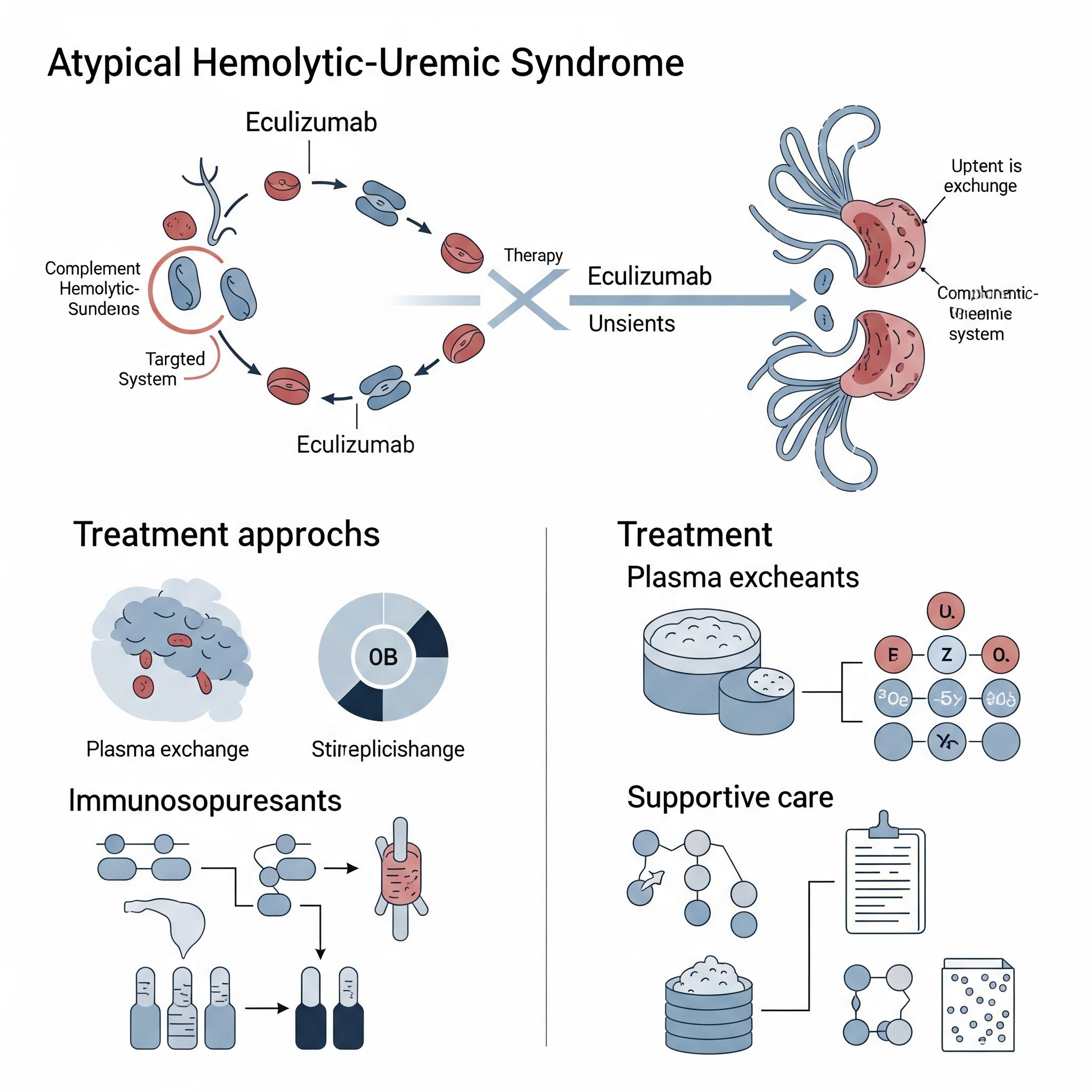aHUS Treatment Guidelines: Navigating Biologics and New Targets

Atypical Hemolytic Uremic Syndrome (aHUS) is a rare, life-threatening disease driven by uncontrolled complement system activation. Characterized by thrombocytopenia, hemolytic anemia, and renal impairment, aHUS primarily affects both children and adults and is increasingly being recognized due to improved diagnostics and awareness.
Request a sample copy of the CI report at:
Understanding aHUS: Pathophysiology and Genetics
Unlike typical HUS, which is triggered by Shiga-toxin-producing E. coli, aHUS stems from genetic or acquired dysregulation of the complement system. Mutations in genes like CFH, CFI, CFB, MCP (CD46), or the presence of anti-CFH autoantibodies contribute to unregulated complement activation on endothelial surfaces. This leads to thrombotic microangiopathy (TMA), damaging small blood vessels, particularly in the kidneys.
Key clinical features include:
* Microangiopathic hemolytic anemia
* Thrombocytopenia
* Acute kidney injury
* Neurologic or cardiovascular involvement in severe cases
Early diagnosis is critical to prevent irreversible organ damage. Complement genetic testing and ADAMTS13 levels help distinguish aHUS from other TMAs, such as TTP.
From Plasma Exchange to Targeted Therapy: Shifting the Treatment Paradigm
Historically, plasma exchange and supportive care were standard, but outcomes were limited, especially in genetically driven cases. The introduction of complement inhibitors has drastically altered aHUS management.
Eculizumab (Soliris), a C5 complement inhibitor, was the first targeted therapy approved for aHUS. It has shown high efficacy in reducing TMA events and improving kidney function, often delaying or avoiding dialysis. However, lifelong use, high cost, and infection risk (particularly meningococcal) are concerns.
Ravulizumab (Ultomiris), a longer-acting C5 inhibitor, offers extended dosing intervals (every 8 weeks), enhancing patient convenience without compromising efficacy.
Pipeline Advances and Novel Therapies
Beyond C5 blockade, new agents targeting other complement components are under development:
* Narsoplimab (MASP-2 inhibitor) for lectin pathway blockade
* Iptacopan (factor B inhibitor) and Danicopan (factor D inhibitor) target the alternative pathway more proximally
* Crovalimab, a novel anti-C5 agent, aims for subcutaneous administration with lower immunogenicity
These emerging treatments could allow for personalized therapy, reduced dosing burden, and potentially curative strategies.
Monitoring, Biomarkers, and Patient-Centered Care
Long-term monitoring includes tracking:
* Hemoglobin and platelet levels
* Serum creatinine and eGFR
* Complement activity markers (C3, CH50)
Treatment decisions increasingly rely on **genetic profile**, response biomarkers, and clinical presentation. Patient education on relapse signs and adherence to meningococcal vaccination is crucial. Telemedicine and digital tools now support ongoing monitoring in chronic cases.
Equity, Access, and Global Challenges
Despite therapeutic advances, challenges remain in:
* Accessing genetic testing in low-resource settings
* Affording biologics due to high costs
* Lack of awareness among general practitioners leads to delayed diagnosis
Global initiatives are vital to expand access to biosimilars, encourage early screening in high-risk populations, and invest in newborn genetic screening programs.
Read the full CI Insights report:
https://www.datamintelligence.com/strategic-insights/atypical-hemolytic-uremic-syndrome-ahus
The Road Ahead: Curative Potential and Innovation
As understanding of complement biology evolves, future goals include:
* Defining optimal treatment duration (e.g., stopping therapy after remission)
* Exploring gene therapy for complement regulation
* Developing oral or self-administered formulations for chronic care
* Integrating aHUS treatment into broader rare-disease frameworks
Clinical trials and real-world evidence will guide individualized care pathways while balancing efficacy, safety, and economic sustainability.
About DataM Intelligence
DataM Intelligence 4Market Research LLP provides real-time competitive intelligence in rare diseases and immunology. We deliver insights into pipeline ***s, regulatory milestones, and clinical trial progress, helping stakeholders navigate fast-changing therapeutic landscapes.
🔗 Visit: www.datamintelligence.com
- Art
- Causes
- Crafts
- Dance
- Drinks
- Film
- Fitness
- Food
- Игры
- Gardening
- Health
- Главная
- Literature
- Music
- Networking
- Другое
- Party
- Religion
- Shopping
- Sports
- Theater
- Wellness


